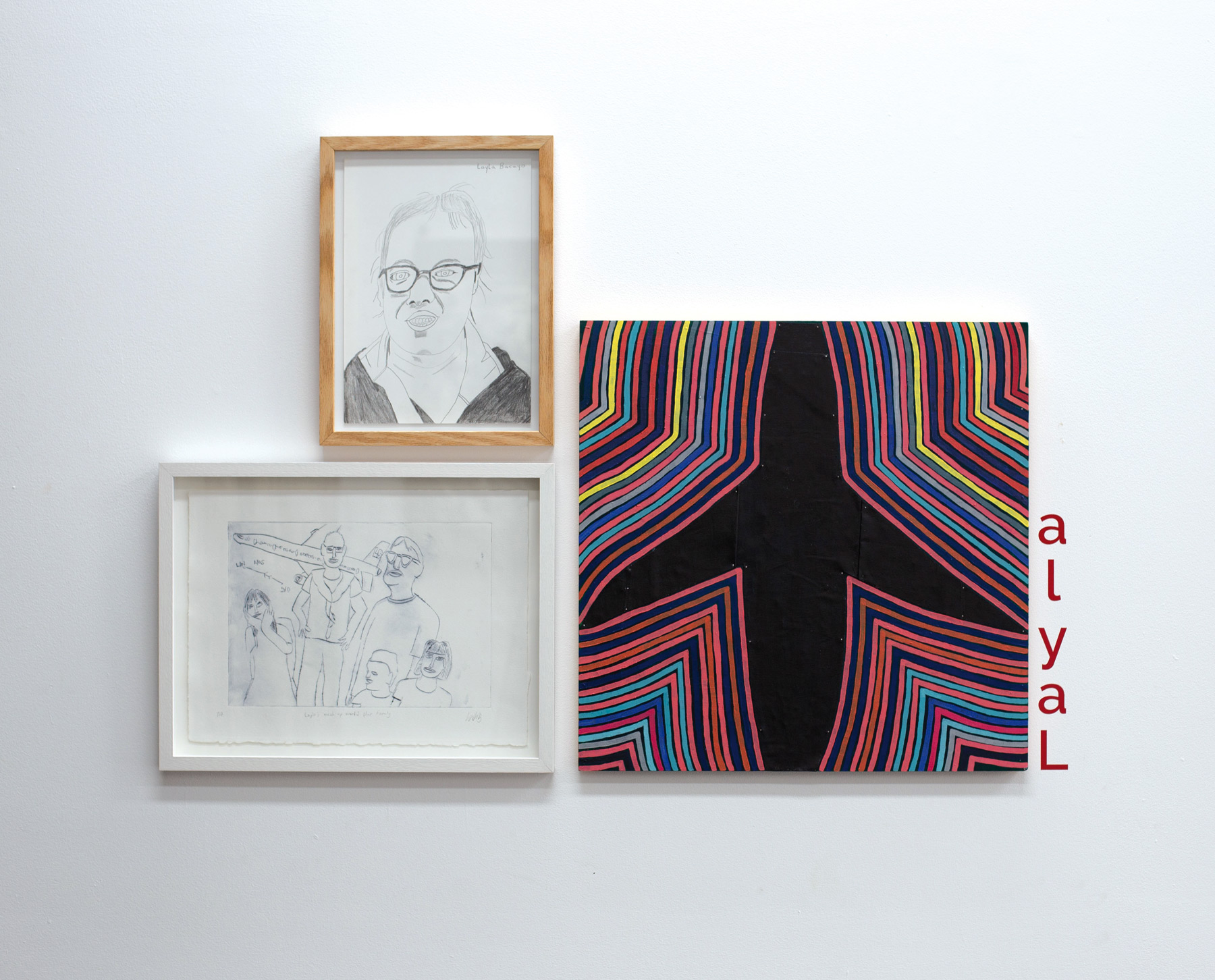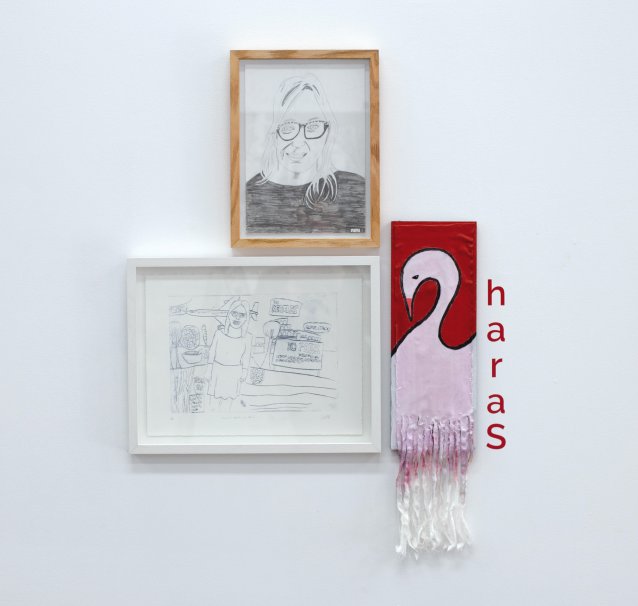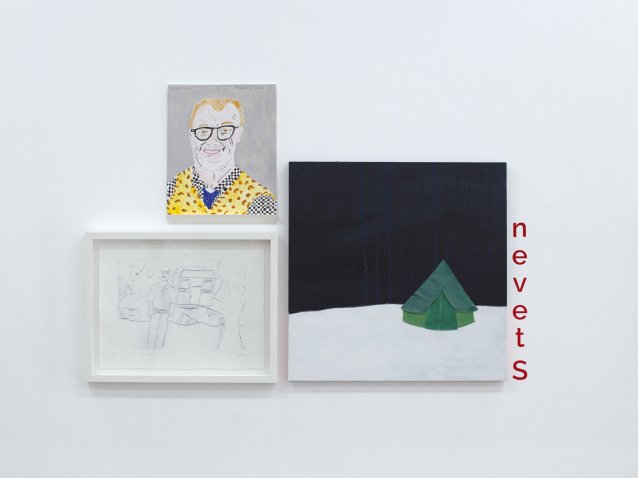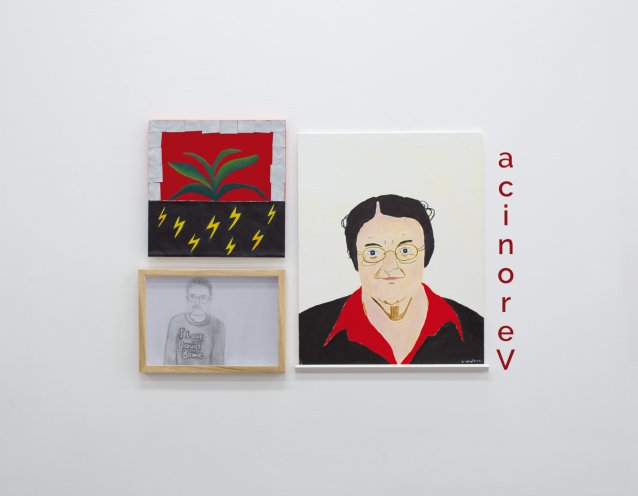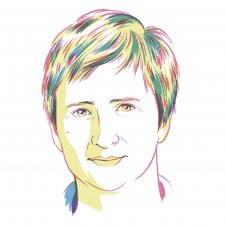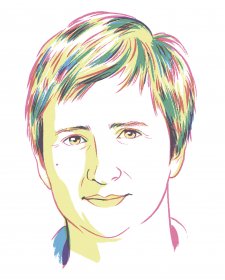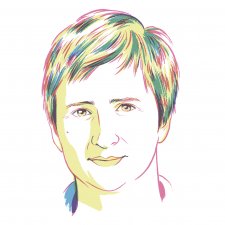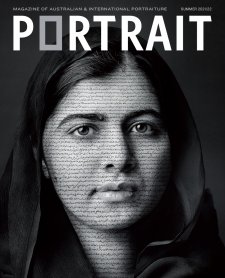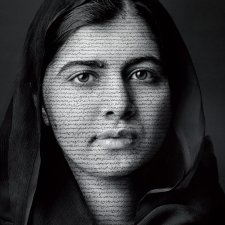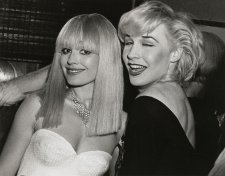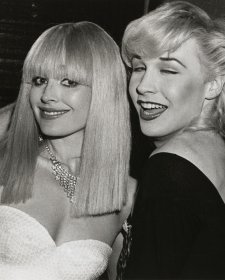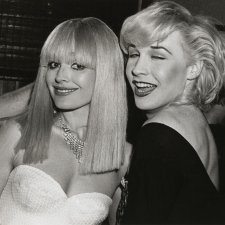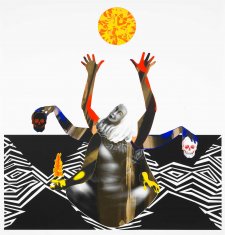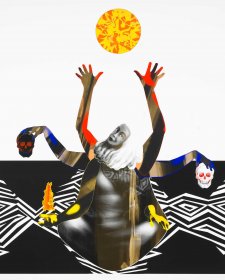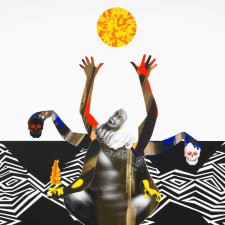Sarah’s work extends her long-term exploration of non-representational portraiture. All the things I never said (2015) at Wagga Wagga Art Gallery, for example, was installation as feminist action that challenged accepted forms of self-portraiture. Similarly, in Unbind Me (2018), at the Western Plains Cultural Centre in Dubbo, Sarah examined personal belief systems in an experiment with intertextual portraiture. In Mash-up her enigmatic, charm-like, totemic visions come from sitters answering an online survey and ‘turning their worlds into imagery’.
For Layla, ‘being an artist is part of who I am. I love being seen that way and being part of my art community’. Her personal narrative portraits cross time and space, layering places, events, moments, likes, dislikes and hopes. They mix and remix social commentary, autobiography, personalities, celebrities, friends, pop cultural references, text and humour into alternative realities. Through Layla’s portraits we see that Veronica loves David Bowie, Sarah has a taste for travel, Steven is relaxed at home among trees. We see Kelly’s love of travel that inspires her painting. Layla’s own self-portrait reflects the disappointment of not being able to get on that plane to the UK.
Veronica always likes to work from a reference photograph, which is how she made the portraits shown in Mash-up. ‘When I draw people, I get to know them.’ Acutely observed, she includes the face’s shape, natural wrinkles, and the shadows that give each sitter their distinctive character. Veronica carefully notices the features that structure each face – such as Wayne’s eyes and cheeks, Steven’s hair and eyebrows, and Sarah’s and Layla’s smiles. The making of Veronica’s portraits is an active process of seeing and connecting with her fellow artists on the other side of the world.
I met Veronica over Zoom one morning, along with Becky Waite, Blue Room Creative Manager. Veronica has been with Blue Room since its foundation in 2008. I asked Veronica about how she approaches making portraits: ‘I like to do them the way they look, sad or happy,’ she said. Veronica indicated that people in Liverpool have been surprised that she was working with faraway Australians, but supported and inclusive studios exist globally. In 2019 Veronica met fellow artists at a UK and European summit at Project Ability in Glasgow, and she is keen to continue to collaborate with artists from around the world. Becky told me that the Art Factory’s strong exhibition program has been particularly interesting to observe because Blue Room wants to ‘grow the artist development side, which Veronica was instrumental in helping us pilot’. She added: ‘We are supporting people to be creative, but we need to show the world what is created.’
Portraits that emerge from within active communities of artists make visible the intangible human qualities of trust, affection, hope and resilience. Mash-up was a demonstration of portraiture’s power to represent and connect people across space and time. And as the world gradually reopens, Sarah and Layla still hope to visit Veronica at Blue Room.
